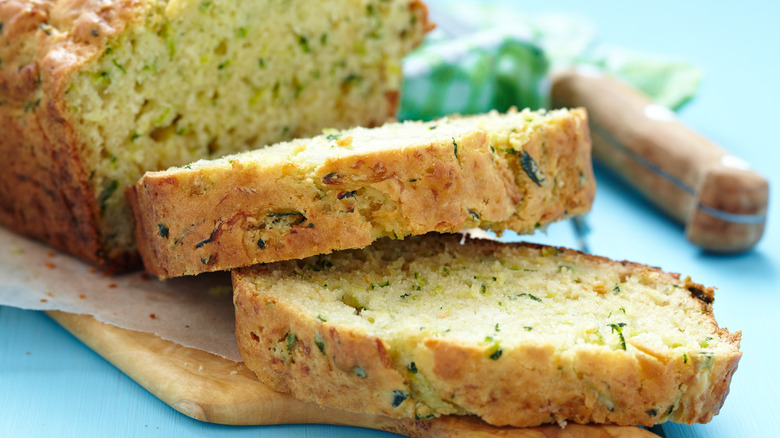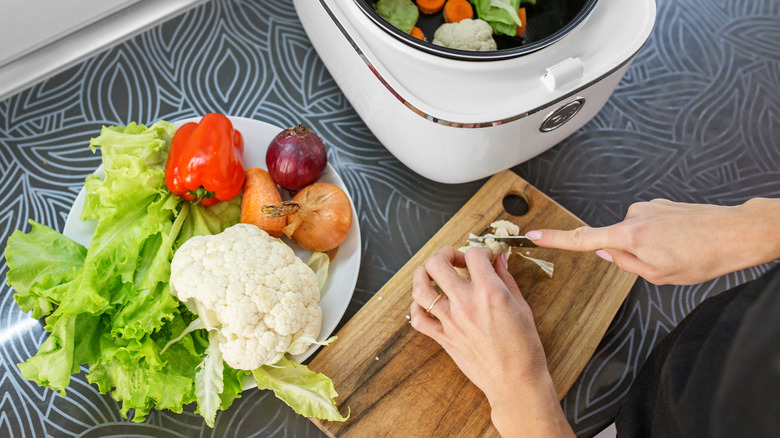A Baker's Top Tips For Adding Vegetables To Your Homemade Bread
When it comes to baking bread, it can be scary to branch out from your fool-proof recipe. After all, baking is a precise science and the time-intensive process can make experimentation not worth the potential failure. We talked to Nathan Myhrvold, founder of Modernist Cuisine and co-author of "Modernist Bread at Home," to learn how to confidently add variety to the baking by elevating your bread game to include vegetables.
According to Myhrvold, folding vegetables into your dough is a great way to add savory flavors to your loaves and it doesn't have to be a scary process. Chef Myhrvold says, "For the best results, I generally suggest using low-moisture [vegetables] that are fully cooked." Examples of some low-moisture vegetables include broccoli, cauliflower, and different types of root vegetables.
Myhrvold goes on to share that you have options when it comes to making sure your added vegetables won't throw off the moisture content in your loaves. "There are a lot of different ways to prepare vegetable inclusions, including roasting, poaching, charring, frying, [or] confit," he explains. However, Chef Myhrvold has a favorite inclusion method called pressure caramelization.
What is pressure caramelization?
Pressure caramelization is a technique developed and popularized by Nathan Myhrvold and the Modernist Cusine team. According to Myhrvold, pressure caramelization is a process that caramelizes food — vegetables in particular — under pressure with the help of baking soda and high heat in a pressure cooker or Instant Pot, producing rich results and intensifying the caramelization of sugars. It's one of his favorite methods of preparing items like vegetables and grains for use in bread.
The best part about using pressure caramelization to prepare your vegetables is it not only draws out more flavor from your vegetables but also enhances the structure and quality of your dough. Myhrold says the "added butter, baking soda, and sugar ... [produce] a larger volume and more open crumb structure." So next time you're craving some home-baked bread try adding your favorite, low-moisture vegetables for versatility — and don't forget to prep them first.

